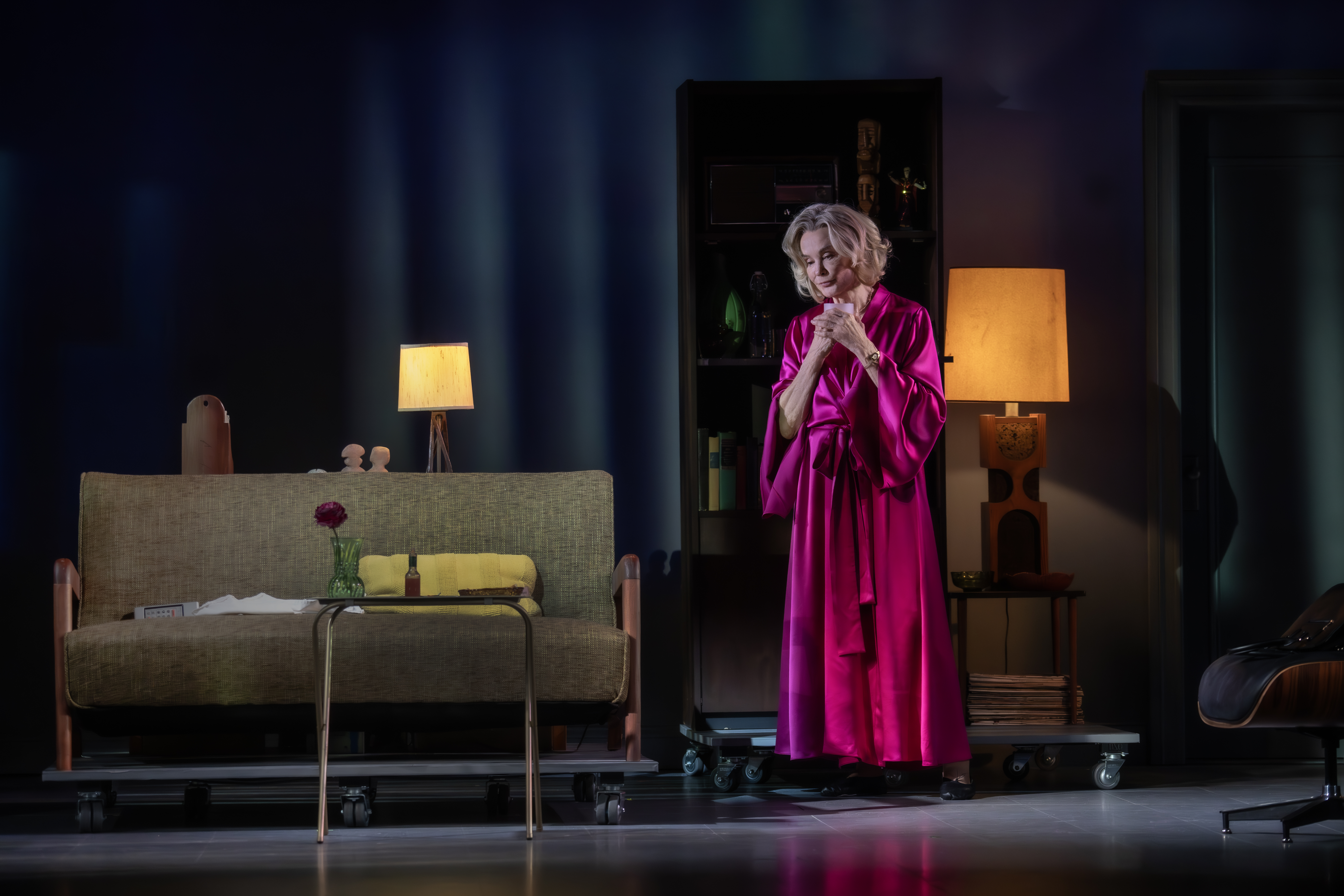It’s a Wonderful Life

(Photo © Paul Kolnik)
As you know, each of us who teaches here at Broadway University gives a mid-term exam each January. My test has always demanded that students identify lyrics from songs and shows. Next month, I won’t be giving a test; in lieu of that, I am hereby requiring all of my students to go to the Gerald Schoenfeld Theatre and see Chita Rivera: The Dancer’s Life. You’ll get more musical theater history here than you could in any classroom; for the second time in his career, Terrence McNally has written a master class. Also, you’ll see what a performer can accomplish when she takes meticulous care of herself and refuses to stop working.
Over the years, I’ve heard many people say that one reason why Rivera kept getting jobs was because she was nice and cooperative; that producers who were on the fence about her would eventually say, “Oh, let’s go with Chita. At least we’ll have smooth sailing.” But those of us who’ve seen her work for these many decades know that her good nature wasn’t the main reason she was signed. She got roles because she had star quality and would always do her job superbly, no matter what the worth of the show.
Now she’s on stage at her 12th different Broadway theater. I liked it when she talked of starting out as a gypsy — the parlance for a Broadway dancer who goes from show to show. (In the 1950s, there was enough work for dancers to dare to do that.) I did sense some irony when she said, “It’s a good word, gypsy” because I’d noticed from the show’s window card that her gypsy musical Bajour was not included in the list of her credits. But, in the second act of The Dancer’s Life, she did mention that show and “Anyanka,” the name of the Romany princess she played. Bajour marked the first time I ever saw Rivera perform — from a front-row seat, yet! After the show, as the curtain call was winding down, she looked down, found me there, and winked, thereby boosting me from my seat and into heaven.
In A Dancer’s Life, Rivera also notes that she’d played the Queen in Merlin. That brought back memories of 1983, when I took my 11-year-old son to see the show. We sat in the third row, dead center. At the end, my kid said to me, “Daddy! The Queen winked at me!” You see, it isn’t enough for Chita Rivera to give you her all while she’s performing; she also makes you feel special after the performance.
Yet, for me, the most poignant moment in The Dancer’s Life came at the end of Act I, when Rivera sang “Nowadays.” Those who’ve been to the show will assume that I’m referring to her making it into a fantasy duet with her Chicago co-star, the late Gwen Verdon. (She indicates where Verdon once stood in the number and then imitates the lady’s voice — perfectly, in fact). This is very moving, but it wasn’t all that got to me. Suddenly, I was taken back to 1975, on that summer day when I first heard “Nowadays” on the original cast album of Chicago. I was moved by the lines, “But nothing stays. In 50 years or so, it’s gonna change, you know.” The world had indeed changed for Broadway, and not necessarily for the better. Fifty years earlier, its writers provided songs that were embraced by the nation and respected as the apex of songwriting. Broadway then offered dozens of new musicals each season; in 1975, there were far fewer.
Now it’s 2005. In 30 years or so, it’s surely changed, you know, with even fewer new musicals and fewer genuine stars performing in them. So many of the luminaries with whom Rivera worked left us during those three decades: Leonard Bernstein, Gower Champion, Cy Coleman, Sammy Davis, Fred Ebb, Dorothy Fields, Bob Fosse, Peter Gennaro, Larry Kert, Dorothy Loudon, Jerry Orbach, Jerome Robbins — and, of course Verdon. But Chita Rivera? She hasn’t changed, you know. “What has changed,” said my buddy Ed Weissman, “is that, tonight, ‘Nowadays’ may very well be sung in a karaoke bar in West Virginia.” He’s right, and we must be thankful for Chicago’s renaissance.
Rivera can’t be said to have had a renaissance, because she never faltered. I do remember a certain morning in 1986 when my clock radio alarm, set to all-news channel WINS, went off and the lead story was that Rivera had been in a severe automobile accident and had broken her leg. I winced as I thought, “Well, that’s that. We’ll never see her dance again.” To think that she’s been in several shows since then — and has won two Tonys — is astonishing. To think that she’ll be 73 next month is even more astonishing. But what is most astonishing is that she has now, at this advanced age, taken on the most demanding assignment of her career, seemingly without breaking a sweat or losing a breath.
Like many others, I’ve decried the fact that theater audiences today seem compelled to give standing ovations no matter what they’re seeing. When something like Chita Rivera: The Dancer’s Life comes along, I really wish that the phenomenon of the Automatic Standing Ovation had never begun, because it devalues spectacular performers and shows who genuinely earn such acclaim. So go, enjoy, laugh, cry, cheer — and stand tall, not just for a star who’s a survivor but also for more than 50 years of Broadway history. Thank you, Chita, for giving it to us.
********************
[To contact Peter Filichia directly, e-mail him at pfilichia@theatermania.com]










